- Home
- Marcia Talley
Footprints to Murder Page 11
Footprints to Murder Read online
Page 11
‘Relieves the tension,’ she explained. As I watched, she removed the mouthpiece from the instrument, pulled off two of the slides, turned the horn to the right as if it were a steering wheel and shook spit out onto the grass.
‘Wagner, right?’ I said.
She nodded. ‘In my spare time I play with the New Jersey Philharmonic. We’re doing a night at the opera in a couple of weeks and I’ve got to master that solo.’
‘If it looked like I was gaping … well, I’ve only known you as a scientific expert on scat analysis, so hearing the horn took me a bit by surprise.’
‘You’d be amazed how many scientists are also musicians,’ she said as she began to disassemble the horn, laying the pieces out on her neon-blue slacks. ‘According to the ancient Greeks, music was math.’ She bent over and started arranging the pieces in the black carrying case that lay at her feet.
I’d worked part-time at Saint John’s College in Annapolis, sometimes known as the Great Books School, so I knew all about the quadrivium: geometry, arithmetic, astronomy and music. ‘My husband teaches math at the Naval Academy,’ I told her. ‘There’s a ton of musical talent there, too. The academy’s annual production of Messiah would knock your socks off.’
‘My point exactly.’
‘I’m looking forward to hearing your talk,’ I said after a moment. ‘You got the schedule change?’
‘I did. Poor Martin.’
‘You knew him?’
She made a rocking motion with her hand. ‘Sort of.’ Cecelia took off her eyeglasses and wiped the lenses with the hem of her white silk blouse. ‘I guess I shouldn’t be surprised, though.’
‘Why not?’
‘Well, he made a lot of enemies, didn’t he? Some of them are here, attending this conference.’
‘You?’ I asked.
‘Not at all.’ Cecelia paused, checked her eyeglass lenses for any remaining specks of lint, then put them back on. ‘Like me, Radcliffe was just doing his job.’ She swiveled on the bench slightly so that she was looking directly at me. ‘If I’ve heard it once I’ve heard it a thousand times from these people. “Science has rejected us; they don’t listen!” It couldn’t be further from the truth. Professional scientists, of which I am one, don’t accept or reject anything offhand. We simply study the evidence and draw conclusions from that. If the evidence doesn’t go along with somebody’s pre-conceived notions …’ She shrugged. ‘We can’t be responsible for hard-headed stupidity.’
‘But who here had it in for Martin? Who specifically?’ I asked.
‘It’s not my job to speculate,’ she said.
I nudged her with my elbow. ‘You’re no fun.’
Cecelia laughed. ‘Have you ever watched his show?’
‘Once or twice,’ I admitted.
‘Then you already know. Radcliffe can be brutal.’ She paused then corrected herself. ‘Could be brutal. Some folks are less resilient than others.’
A bee dive-bombed Cecelia’s hair, perhaps mistaking her for a flower. She brushed it away impatiently. ‘I watched Radcliffe take down a Pentecostal faith healer once. It was pretty ugly.’
‘I missed that show,’ I said.
‘When Radcliffe insisted that there was no historical evidence that Jesus Christ ever existed, I thought the guy’s head was going to explode,’ she said. ‘Fortunately they cut to an ad before the preacher forgot all about keeping the Sixth Commandment.’
‘Thou shalt not …’ I paused, mentally running down the list I’d had to memorize as a kid in Vacation Bible School. ‘Hah! Thou shalt not kill.’
‘He provokes people just for the ratings.’
‘I was impressed by Martin’s talk last night,’ I said. ‘He could have dismissed the Patterson-Gimlin film out of hand like a lot of people but he didn’t.’
‘He wouldn’t,’ Cecelia said. ‘It could be a hoax, of course, but conclusive evidence that it was faked simply doesn’t exist.’
‘Speaking of hoaxes, what did you find out when you analyzed the hair samples?’ I asked. ‘Were they legit?’
She grinned. ‘Ah, for that you’ll just have to wait like everyone else.’
I stood up and smiled down at her. ‘If you aren’t going to give me a sneak preview then I guess I better be getting back to work.’
‘I’ll come with you,’ she said, picking up her horn.
‘Have you had lunch?’
‘Grabbed a salad before I came out here.’ She patted her blouse where it strained slightly over her stomach. ‘Watching my waistline. It’s here somewhere, I feel sure.’
I chuckled, as she probably intended.
‘What would Sasquatch scat look like, anyway?’ I asked as we headed back toward the lodge, walking side by side along the winding path. ‘If it exists, I mean.’
‘Picture this: a two-ton bear after a bout of chronic constipation.’
For the second time that day I dissolved into totally inappropriate laughter.
Professor Cloughly said, ‘I saw you earlier talking to Jake Cummings. Outside the dealers’ room.’
I wondered if my laughter had triggered the memory. I felt my face flush. ‘He’s found some footprints down by the river,’ I told the doctor. ‘He tells me they have flexible midtarsals, whatever that means. It seemed important.’
‘The midtarsal joint is formed by the articulation of the calcaneus with the cuboid and the articulation of the talus with the navicular.’
I grinned. ‘Well, thanks for clearing that up!’
‘Simply put, the toes have knuckles.’
‘Ah.’
Resting one hand in the palm of the other, she demonstrated by flexing her fingers like a spider doing pushups. ‘Because of the way hominids walk, the toe impressions would be slightly deeper than the heel,’ she explained. ‘This can be faked, too, of course, but a footprint with that characteristic would be worth looking into.’
‘They were big, Jake said. Almost sixteen inches long.’
‘Interesting.’
‘He’s making plaster casts,’ I continued as we made our way across the patio and into the lodge.
‘Hmmm.’ Cecelia seemed distracted. A case of nerves, perhaps? Worrying about her talk?
‘See you in ten minutes.’ I needed to give myself time to text my husband before heading to the conference room. ‘I’m sure your PowerPoint is ready to go but no harm in double-checking.’
‘Thanks, Hannah,’ she said and chugged down the hallway as fast as one can go on short legs while lugging a French horn.
Where was she going? The elevators were off the lobby behind me, the restrooms just to my right and Professor Cloughly’s conference room was in the opposite direction.
An absent-minded professor, perhaps? I shrugged. Everyone was a little distracted these days.
TWELVE
Londonderry, Ireland, 1800. ‘There is now in the River an astonishing large Hairy Wild Man, caught 400 miles from the Cape of Good Hope, brought over in the Rambler, South Sea Whaler; he is of astonishing muscular strength, a specimen of which had nearly proved fatal to one of the custom-house officers, who inadvertently went too near him; he seized hold of the man, twirled him about two or three times with the greatest velocity, and then threw him over the side. Luckily the man escaped with a horrid fright and a sound ducking.’
Glasgow Advertiser, September 7, 1800
‘When it comes to scat analysis,’ Professor Cloughly began, ‘the fresher the better.’ On the screen, a pony-tailed, khaki-clad volunteer squatted over a mound of dung, holding a brown paper bag – the kind my mother used to use to pack school lunches. ‘Shoo away the flies and examine it closely,’ Cloughly instructed.
Sitting in the back row on the chair next to me, Leah Solat mumbled, ‘No, thank you.’
‘Are we having fun yet?’ I asked.
‘Better than hanging around California to investigate why the Elk Grove school district is buying canned peaches from China to serve in their cafeterias despite federal B
uy America guidelines,’ she said.
‘Glad this comes after lunch rather than before,’ I whispered back as the next photograph slid sideways onto the screen: a row of paper bags neatly labeled with a date, elevation and GPS location in bold black letters.
The bags dissolved into a photograph entitled ‘Cat Scat,’ showing a snow leopard beautifully posed on a snow-dusted rocky ledge. ‘Because of their rarity and the human inaccessibility of their habitat,’ Cloughly continued, ‘snow leopards in Mongolia and the Himalayas are rarely seen, but we know that they exist and can estimate population numbers because of their scat. To my knowledge,’ she continued, ‘no one has yet collected any suspected Sasquatch scat that cannot be conclusively linked to an existing mammal – primarily bears.’ The snow leopard dissolved, replaced by a grizzly bear reared up menacingly on its hind legs and captioned, ‘Bears Do What in the Woods?’
Someone in the audience sniggered.
The bear on the screen dissolved, revealing the next slide. ‘That’s an imposing pile of poo,’ I said softly. A ruler placed next to the mound of scat measured an impressive ten inches.
‘Very moving,’ Leah muttered.
Bathroom humor. Always good for a laugh.
Cloughly went on to illustrate how frozen fecal samples are air dried, transferred to nylon stockings, washed and then air dried again before the indigestible remains – bones, feathers and hair – are examined using a light microscope. ‘This sample,’ she continued, moving to the next slide, ‘is from an American black bear, collected in the spring. It consists primarily of big-tooth Aspen catkins.’
Before Cloughly could move on to the next slide, a woman wearing a dark green hoodie interrupted: ‘But what does what bears eat have to do with Squatch?’
‘It’s just an illustration,’ Cloughly explained with patience. ‘Because of the color, size, shape, consistency and content of this particular sample, we can say it’s definitely bear. That’s because we have other samples, also from bears, to compare it to.’
Even from where I sat, I could see the lightbulb go off over the woman’s head. ‘And we don’t have any Sasquatch poop that we know of, do we? Poop to compare it to?’
‘Exactly. And that’s why hair analysis is so important. Which brings me to my next slide. Over the past several decades,’ Professor Cloughly continued, ‘the science of identifying animal species by studying hair samples has been well-developed. You’ve all watched CSI, haven’t you?’
Nodding all around.
‘The serial killer caught by distinctive cat hairs on the carpet the body was rolled up in. The extortionist who overlooked the hairs from his pit bull, Bruno, when he supplied the canvas bag to put the money in.’
‘Dumb and dumber,’ somebody muttered.
Cloughly smiled, as if she heard and agreed. ‘Under a microscope,’ she continued, ‘human hair is especially easy to distinguish from that of an animal. Animal hair medullas – by that I mean the centers – are quite structured, as in these samples.’
On the screen, photographs of lab slides labeled ‘cat’ and ‘rabbit’ reminded me of a necklace and an ear of corn respectively. The sample labeled ‘bat’ resembled a row of miniature shark’s teeth. ‘The medulla of human hair, on the other hand,’ she went on, forwarding to the next slide, ‘is typically thin, broken or not even present, as in the sample pictured here. Note that there is no medulla. The strand is a uniform color throughout.’
More nodding. Everyone was following the professor so far.
‘I should explain that this particular sample is from a subject who is known to some of you: Homer Guthrie.’
A photograph of Homer filled the screen.
I stifled a gasp. Every inch of the poor man’s face was covered with long, reddish-brown hair. Blue eyes, brimming with all the sadness in the world, stared out from under the fringe that on anyone else would have been eyebrows. Homer looked more like a werewolf than a Sasquatch, I thought, wondering if he’d ever tried depilatories, or if electrolysis would do the trick.
‘Homer had hoped to be with us today,’ the professor said, ‘but circumstances prevented it. Fortunately he’s generously agreed to let me share the results of our DNA analysis of his hair sample with you.’
‘Cut to the chase, Doc,’ somebody muttered.
I was sure she heard but Cloughly ignored the heckler and forged on. ‘I’d like you to note the uniform, reddish color of this sample taken from Homer’s head. It has all the characteristics of being human. But could Sasquatch hair have similar, human-like characteristics? Or is it more like an animal’s? Impossible to tell until we have hair from a Sasquatch for comparison.
‘Mister Guthrie has been led, all his life, to believe that he is a missing link – half human, half Sasquatch,’ she continued. ‘But is he? We can’t tell by simply looking at Homer, or at his hair, so we move on to the next step: DNA analysis. We thought, and Homer agreed, that his sample should be included among the hairs presumptive for North American Sasquatch that have been supplied to us for examination.
‘From the samples provided to our laboratory, we selected hair shafts approximately four centimeters in length and thoroughly cleaned them to remove all surface contamination. Then we ground them up in a buffer solution which was incubated for two hours at 135 degrees Fahrenheit in a solution containing proteinase K.’
Her eyes went on scan, studying the audience, some of whom were scribbling madly in notebooks or on the blank ‘Notes’ pages at the back of their conference programs. A dazzling smile. ‘Am I going too fast for you?’
She gave the scribblers time to catch up before moving on. ‘In the next step, we extracted the DNA and performed PCR – that’s polymerase chain reaction amplification – of the ribosomal mitochondrial DNA 12S fragment corresponding to bps 1093-1196 of the human mitochondrial genome …’ She paused. ‘Are you still with me?’ Then laughed. ‘I thought not. It’s all rather complicated.’
The image on the screen of a rubber-gloved hand holding a rocket-shaped test tube evaporated to be replaced by a diagram featuring photos of lab equipment connected by lines, circles and arrows. ‘In simpler terms,’ she explained, highlighting one of the images with a laser pointer, ‘we isolated one or more of the DNA fragments carried by the hair.’
As she spoke, most eyes in the room followed the red laser dot, with the exception of one lonesome cowboy who’d fallen asleep, chin on chest, in the back row. ‘We amplified the fragment, mapped the sequence and then compared it with the DNA sequences of known mammals that are on file in the GenBank at the National Library of Medicine outside of Washington, DC.
‘Sadly, two of the samples were too degraded to recover any DNA, but in spite of the age and condition of some of the hairs – one sample had been in a museum for over forty years, imagine that – we were able to obtain DNA and match them with one hundred percent certainty.’
The next slide showed columns of seemingly random letters – g’s, c’s, t’s and a’s – arranged in six groups of ten, row after row after row. The screen was full, thick with them. ‘This is a GenBank record for bos taurus, otherwise known as a cow,’ she said.
The face of a black-and-white cow slowly materialized, pixel by pixel, superimposing itself over the dense columns of letters. ‘When we compared the results of hair sample number one taken from a barbed wire fence in Arizona,’ the professor continued, ‘this was the result. Cow.’
‘Shee-it,’ someone in the audience muttered, possibly the donor from Arizona.
The dozing cowboy awoke with a snort and glanced around in confusion. Somebody tittered.
‘The next slide is a table showing our results. Don’t worry about trying to copy it all down. I’ll have handouts for you at the back of the room after the session. Please note that each sample is listed by location, to what creature – yeti, Bigfoot, almasty, yeren and so on – the sample was attributed, the GenBank match and the common name of that match.’
Professor Cloughly paused,
giving the audience time to scan the table of results.
My eyes strayed immediately to the ‘common name’ column: brown bear, horse, black bear, wolf, raccoon, porcupine, sheep …
Deep silence filled the room as the significance of the professor’s results sank in. All of the samples matched up with a known mammal. Without exception. Even Homer Guthrie. Homo sapiens. Human.
Next to me, Leah had her iPad open to a document in Pages. After Professor Cloughly announced the findings, Leah’s fingers flew over the virtual keys and tapped a few icons.
‘There!’ she whispered in an aside. ‘Story filed.’
‘What story is that?’ I whispered back.
‘Remember that hair sample I told you about – the one from Strawberry, California?’
‘The guy connected with your newspaper?’
She tipped her head toward the screen where the official table of results from the lab at South Jersey Shore University was still displayed. ‘Porcupine. How embarrassing is that?’
I grinned. ‘Could have been worse, I suppose, like the hair of the wild Dacron.’
She waggled her fingers. ‘Ooooh … I saw a giant Orlon once. The teeth, the claws!’
I nudged her with my elbow. ‘Shhhh. Have some respect.’
We both watched as, from the second row, a tattooed arm shot up and waved to attract Professor Cloughly’s attention. When she called on him, the man stood. ‘With all due respect,’ he began, which in my experience usually prefaced a remark that would be anything but respectful, ‘this is total bullshit.’
On the stage, Cloughly waited, smiling indulgently. Clearly, she had been expecting criticism. I prayed she was prepared for it.
The guy leaned so far over the woman sitting directly in front of him that she had to duck sideways to avoid being smacked by one of the arms he began thrashing around to emphasize his point.
‘I seen that critter! We was eyeball to eyeball for, like, two minutes, neither of us saying nothing. After he skedaddled I picked that hair off the tree he was standing behind. You think I don’t know the difference ’tween a Bigfoot and a goddam deer?’

 Unbreathed Memories
Unbreathed Memories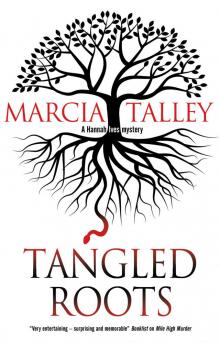 Tangled Roots
Tangled Roots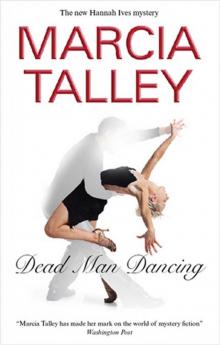 Dead Man Dancing
Dead Man Dancing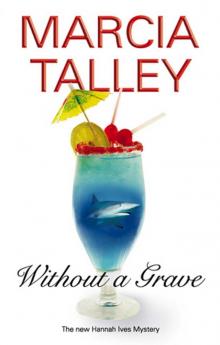 Without a Grave
Without a Grave Sing It to Her Bones
Sing It to Her Bones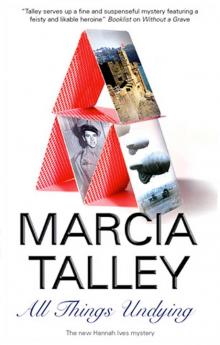 All Things Undying
All Things Undying Naked Came the Phoenix
Naked Came the Phoenix Daughter of Ashes
Daughter of Ashes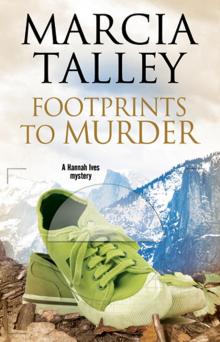 Footprints to Murder
Footprints to Murder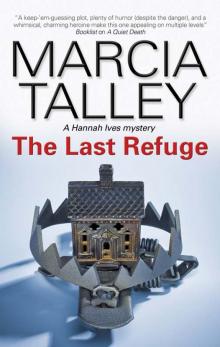 The Last Refuge
The Last Refuge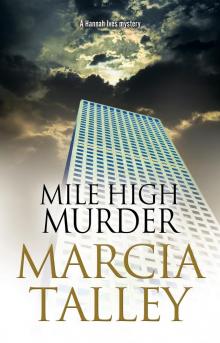 Mile High Murder
Mile High Murder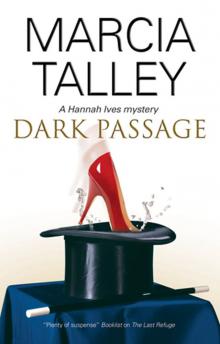 Dark Passage
Dark Passage This Enemy Town
This Enemy Town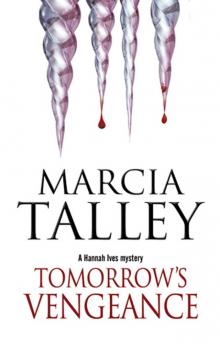 Tomorrow's Vengeance
Tomorrow's Vengeance Occasion of Revenge
Occasion of Revenge I'd Kill For That
I'd Kill For That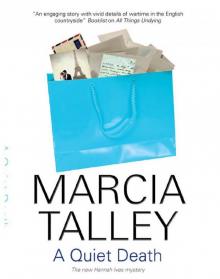 A Quiet Death
A Quiet Death